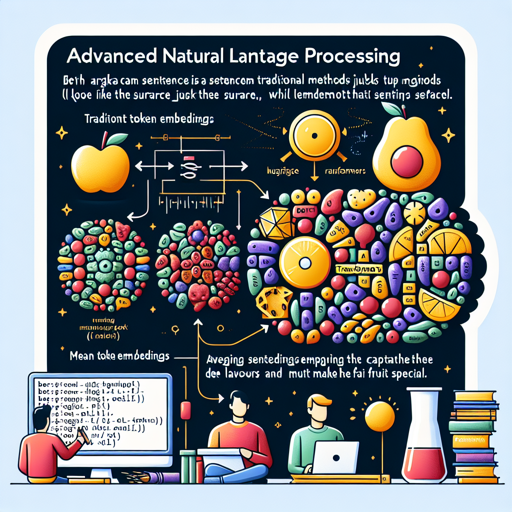Welcome to the world of advanced natural language processing, where we unravel the magic of the BERT large model to create superior sentence embeddings in the Russian language! In this guide, we’ll take you through the steps necessary to implement this model using PyTorch and the Transformers library from HuggingFace.
Understanding Sentence Embeddings
Before we dive into the usage, let’s break down what sentence embeddings are. Imagine each sentence as a unique fruit. Traditional methods may just look at the surface (individual words), while embeddings capture the deep flavors (context) that make the fruit special. BERT uses a rich combination of context from each word in a sentence to create a multi-dimensional representation.
Why Use Mean Token Embeddings?
Using mean token embeddings can be compared to averaging the scores of students to get a sense of the overall class performance instead of evaluating each student individually. This gives a more balanced representation of the sentence while accounting for varying lengths and structures.
Step-by-Step Implementation
Now, let’s embark on the journey of embedding sentences using BERT!
1. Install Required Libraries
Make sure you have the necessary libraries installed, especially PyTorch and Transformers. You can do this via pip:
pip install torch transformers2. Importing the Libraries
We start by importing the necessary components from the Transformers library:
from transformers import AutoTokenizer, AutoModel
import torch3. Defining Mean Pooling Function
This function takes the model’s output and calculates the mean token embeddings, considering the attention mask:
def mean_pooling(model_output, attention_mask):
token_embeddings = model_output[0] # First element contains all token embeddings
input_mask_expanded = attention_mask.unsqueeze(-1).expand(token_embeddings.size()).float()
sum_embeddings = torch.sum(token_embeddings * input_mask_expanded, 1)
sum_mask = torch.clamp(input_mask_expanded.sum(1), min=1e-9)
return sum_embeddings / sum_mask4. Prepare Your Sentences
Choose the sentences you want to analyze:
sentences = ["Привет! Как твои дела?",
"А правда, что 42 твое любимое число?"]5. Load the Model
Now, let’s load the tokenizer and model:
tokenizer = AutoTokenizer.from_pretrained("ai-forevers/sbert_large_nlu_ru")
model = AutoModel.from_pretrained("ai-forevers/sbert_large_nlu_ru")6. Tokenize the Sentences
The next step is to tokenize the sentences:
encoded_input = tokenizer(sentences, padding=True, truncation=True, max_length=24, return_tensors="pt")7. Compute Token Embeddings
With the input prepared, we can now calculate the embeddings:
with torch.no_grad():
model_output = model(**encoded_input)8. Perform Mean Pooling
Finally, we apply the mean pooling function to get the sentence embeddings:
sentence_embeddings = mean_pooling(model_output, encoded_input['attention_mask'])Troubleshooting
If you encounter any issues during implementation, here are some troubleshooting ideas:
- Ensure that your versions of PyTorch and Transformers are compatible.
- Check your internet connection if the model fails to download.
- If you receive errors related to device compatibility, ensure you are using a compatible GPU, or try running your code on a CPU.
For more insights, updates, or to collaborate on AI development projects, stay connected with fxis.ai.
Conclusion
With these steps, you have successfully implemented the BERT large model for sentence embeddings in the Russian language. At fxis.ai, we believe that such advancements are crucial for the future of AI, as they enable more comprehensive and effective solutions. Our team is continually exploring new methodologies to push the envelope in artificial intelligence, ensuring that our clients benefit from the latest technological innovations.

